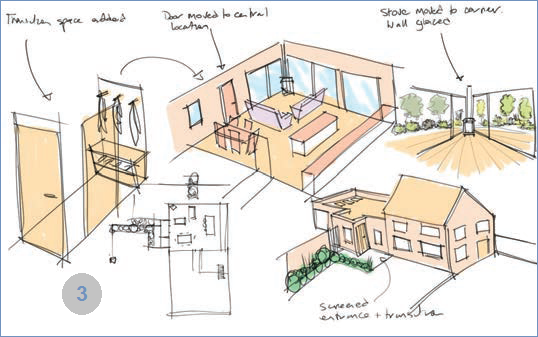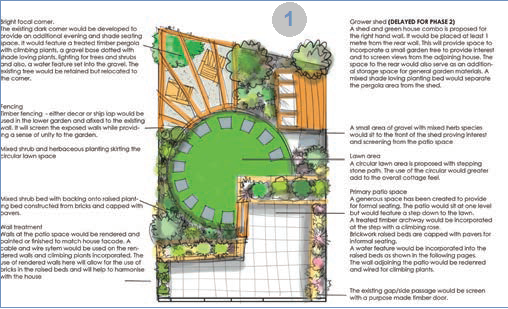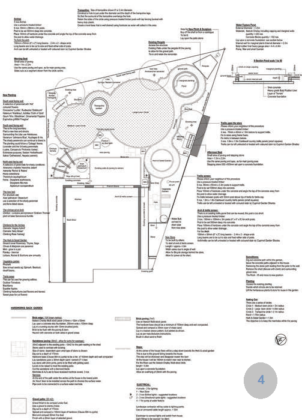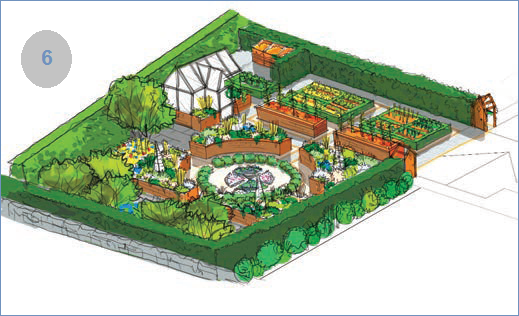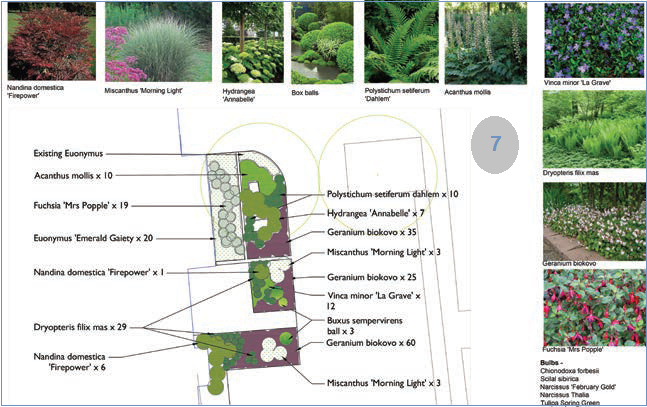The subject of fees for professional landscape and design work in Ireland is a charged subject and one the sector has great difficulty facing up to. The lack of transparency and openness about what professionals charge for their work is undermining the market, causing consumer confusion and assisting the unqualified to retain a foothold. With a view to dispelling the mystery and clearing the way for a more open and transparent working environment, GLDA President, Patricia Tyrell shares insights from colleagues on exactly what they charge and what customers should expect for their money. |
If I had a couple of grand for each time I have been told that I have a wonderful career, I would have a reasonably good slush fund by now. And it is a wonderful career; close to nature, outdoors to a degree, creative and a source of life-long learning, with all of its proven cognitive benefits. Each day brings something new and interesting.
The skills required to be a landscape or garden designer are broad ranging. At the core of these skills is a capacity for good and creative design. In order to communicate that design to others, drawing and drafting skills are essential. As much of the visualisation is now computer aided it entails keeping up to date with new and varied computer software. Also required are a knowledge of construction and materials, of soils, climate, botany, and ecology and essentially, in my opinion, a knowledge of plants, how they grow and where, and in addition to this horticultural knowledge a capacity to choose and put together planting palettes to optimum effect.
The foundation for these skills is laid at college, but to hone and perfect them is an on-going challenge, albeit an interesting one.
There is an elephant hiding somewhere amongst the foliage though: the small question of income. Surely people with such a broad skill set and so much to offer, and who by all accounts are more in demand than ever before, should expect and command a good income? It seems not, and many designers supplement their income in various ways such as teaching, unable to survive on design fees alone.
The question of income is a complex one. Some of the issue is down to ignorance of the role of a landscape or garden designer. Frequently, when I meet acquaintances after a period of time, I am asked ‘Are you still at the gardening?’ It’s not that I mind, but it fundamentally demonstrates how little people know about what one does. There is vagueness, a fuzzy picture in people’s minds about what a garden designer’s role is. They cannot differentiate between the unskilled person who comes and clips all their shrubs into unsympathetic balls, the professional horticulturist who maintains their garden properly, the nurseryman who supplies the plants, the landscape contractor who builds a garden and the garden designer who designs it. This is strange as they would never ask an architect to take up a trowel and build their house or indeed allow a builder carte blanche with the style and layout.
The work of professional bodies in promoting their members has a huge part to play in how the public relate to it. In the garden design that professional body is the Garden & Landscape Designers Association (the GLDA). The more designers who are willing to get behind the organisation and lend their weight to what is a very worthwhile body, the more garden design will be recognised as a profession deserving of proper remuneration.
It’s important that there be a recognised standard for the quality of a designer’s work. Those offering services with little or no qualification and delivering poor quality at bargain basement prices are making it increasingly difficult to command an appropriate price for those delivering quality design services. So part of the solution lies in education, and part in communicating to potential clients what a designer is and what they do.
COMMUNICATING WHAT THEY DO
Potential clients who wish to employ a designer are often put off by a lack of transparency in exactly what they are getting and how much it will ultimately cost. If the client does not know what to expect it can make it difficult for both the designer and the client.
It is important therefore to communicate the process of your design and the associated fees.
The following fees are guidelines, and every designer will be slightly different depending on how they work. Designers with a lot of experience and gold medals under their belts will command higher rates than those starting out. However, there should be a minimum below which designers should not go, in order for them to have a reasonable income and be properly rewarded for their work. No matter how much you enjoy your job, if it is not generating sufficient income then disillusionment is sure to follow. It is important to consider what a reasonable level of income would be and calculate accordingly. Decide on an hourly rate and then work out the amount of time it will take you to deliver the finished design. The following rates are a minimum cost for designing a small to medium suburban garden of up to 500m2.
PROCESS:
Initial on-site consultation: €120 upwards
If you need a plumber or an electrician, a doctor or someone to fix your washing machine, they will not set foot inside your door without a callout fee, regardless of whether they can
solve your problem or not. So why then do some designers offer free consultations?
Research has shown that if you get something for free, you tend to put less value on it. By offering a free consultation you run the risk of being exploited. The potential client can call in as many designers as they want, pick their brains and never employ any of them. Put a value on your time and skills. Going to a site has a cost in time, fuel, and other overheads.
Travelling to and from, and the time spent on site will usually amount to three hours, and possibly more if there is distance involved. If someone values your work, they will pay for it.
Fees for a single call out vary but will start at €120 upwards. Some designers will offer a once-off consultation with on the spot suggestions when this fee will then rise to €250 or more depending on whether further input is required.
This first visit allows the designer to obtain a client brief and view the garden. Though fees can be calculated as a percentage of the total cost of the job, private clients like to know where they stand and a fixed fee is usually agreed for the various stages of the design. A quote will usually be sent to the client following this initial consultation.
SITE SURVEY, ANALYSIS AND PRESENTATION OF CONCEPT DESIGN/ MASTER PLAN: €700 UPWARDS
A site survey can take two to three hours and in addition, the measurements and data must then be transferred to the drawing board or computer. So allow at least four hours of your time for this stage.
Regardless of the size of the garden, the concept design can be an extended process with many iterations, before the optimum design is created. In addition visualisations, sketches
and sections are usually part of the package. A mood board may also be included as part of the drawing set. From consulting with designers within the GLDA the consensus was to allow 12 to 16 hours, though all agreed that as a creative process, more hours were spent thinking about it than the calculated hours spent at the drawing board.
Once the concept is complete at least one further consultation with the client will be necessary and should be included in the designer’s initial fee calculation.
Taking the design from survey to the delivery of the master/concept plan would cost a minimum of €700 upwards.
DETAILED DESIGN DRAWINGS
● Planting Plan: €650 upwards
● Construction drawings: €400 upwards
It is difficult to put a cost on planting design as it very much depends on the master plan and how much planting is involved. The same applies to construction drawings as the hard landscaping can be very simple or extremely complex. The client brief should yield some clues as to the final costing.
THE NEXT STAGE
Once the garden design has been agreed, the tendering process and overseeing the design implementation is best carried out on an hourly rate.
The final figure to design stage is €1,850 for an average suburban garden. It’s good value because employing a qualified garden designer will save the client money in the long term. The pleasure a beautiful garden brings to its owners is priceless. ✽
 Patricia Tyrrell is a landscape architect, garden designer, horticulturist and gold medal winner. She can be contacted via her website at living-landscapes.com Patricia Tyrrell is a landscape architect, garden designer, horticulturist and gold medal winner. She can be contacted via her website at living-landscapes.com |


